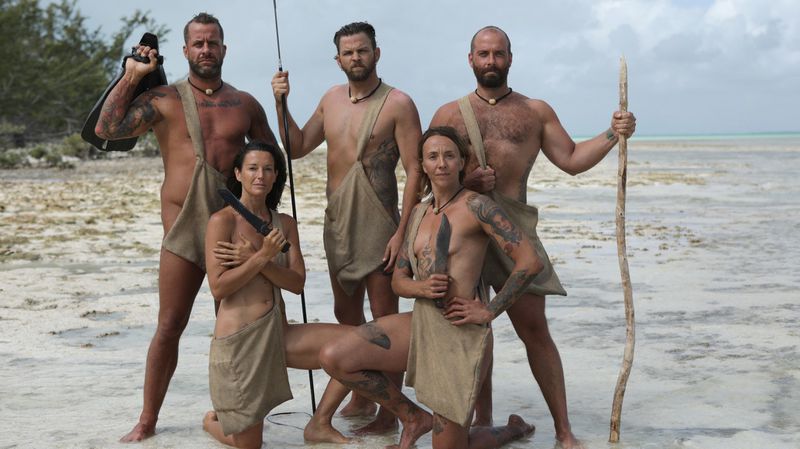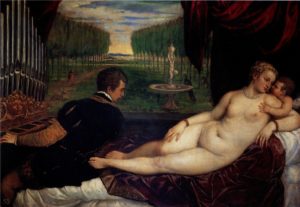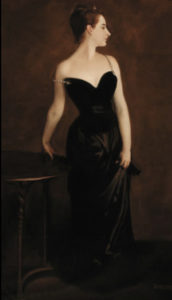Episode #1 of John Berger’s Ways Of Seeing speaks on the idea that since the invention of the camera, images have become a sort of language that can take on a completely distinct meaning from its original intended purpose. This is done through the manipulation of context in which the image is found. Take for example the memes we see everyday on social media. The format is simple, yet effective. This image for example…

Shows a point in time in an episode of a television series where two of the same character are pointing at each other as if to be confused about what they are seeing. “That man’s an impostor” one of them says, to which the other replies “THAT man is the impostor”. The intended purpose of the films creator during that time was to express that one of these two is an impostor. However, social media has manifested a new “comedic language” in which words are placed over these sorts of images and given a completely new meaning. The end product looking something like this…

…The words placed over the image join together with the image to tell the viewer that having insomnia due to anxiety is the same as having anxiety because of your insomnia. Another example would be the following…

…Just like in the previous example, this image was taken from a film. The characters seem to be in the middle of thinking up a plan, however the words placed over them give the image a new meaning. A sort of friendly and funny meaning. This relates to John Berger’s ideas because it hits on the idea that easily reproducible images can be easily stripped of their original meaning and given a whole new array of possible meanings, which also depends on the viewer’s perspective.
~~~The idea that perspective is all about the eye, and how the eye can only be in one place at one time is what makes a viewer’s perspective so distinct from one another and also what gives meaning to what the viewer is looking at. This means that what you are looking at is distinct to you and only you, and no other person sees that image in your head the way you do but you. This also means that no other person can attach the same meaning to those images as you. They are seeing it from their perspective, through their own life experiences. Things another human being could not replicate. Until the camera. Camera’s are able to capture moments at any given time, and can be duplicated endlessly. Things you would normally travel miles to see now travel to you. It’s ironic how the very act of endlessly reproducing images due to their uniqueness, actually takes away from the image and in a sense lessens the quality. You can see an image of The Eiffel Tower a million times in a textbook, and it wouldn’t mean a thing, but it’s different when you’re standing in front of it. You can feel the greatness of the structure. But you’d probably take a picture of it there anyways. Likewise, when you play music over images you can change the feeling that the image gives off, and thus its meaning. ~~~








 <img class='wpa-image-missing-alt size-medium none'
<img class='wpa-image-missing-alt size-medium none'


 and nude is how women have been seen. This distinction is ways out for sexual pleasure of the viewer. Berger show how the nude in European art completely objectify women. This become an ongoing situation in our society, that is now #MeTooMovement which is against sexual harassment and sexual assault. In this movement women from all over the globe for example actresses, workers, business women, and from other fields come together and share what happened to them. I feel like men treated women like an object. In addition, Men think that women as a tissue so they could use them and throw them whenever they want. It’s like women have no value in society. I’ve seen these kind of problems in my society where if the girl family find out that she had boyfriend they will not let her go out anywhere alone and in the boy family it’s not a big deal. Society and the boy family will claim that this girl trapped their innocent boy by sweet words which is totally wrong. This apply Berger’s reliance that fairness between men and women largely in our society.
and nude is how women have been seen. This distinction is ways out for sexual pleasure of the viewer. Berger show how the nude in European art completely objectify women. This become an ongoing situation in our society, that is now #MeTooMovement which is against sexual harassment and sexual assault. In this movement women from all over the globe for example actresses, workers, business women, and from other fields come together and share what happened to them. I feel like men treated women like an object. In addition, Men think that women as a tissue so they could use them and throw them whenever they want. It’s like women have no value in society. I’ve seen these kind of problems in my society where if the girl family find out that she had boyfriend they will not let her go out anywhere alone and in the boy family it’s not a big deal. Society and the boy family will claim that this girl trapped their innocent boy by sweet words which is totally wrong. This apply Berger’s reliance that fairness between men and women largely in our society.
